Three U.S. companies have been slapped with a wrongful death and products liability lawsuit for manufacturing products linked to London’s Grenfell tower fire. The fire, which has been called the worst UK residential fire since the 2nd World War, killed 72 people and injured many others on June 14, 2017.

Starting in a Whirlpool fridge-freezer, the blaze eventually reached the exterior cladding, which was manufactured by Aconic Inc., and “highly combustible insulation” manufactured by Celotex Corp., part of Saint-Gobain Corp., said the complaint.
“The highly flammable cladding turned Grenfell Tower into a flaming coffin, entrapping the residents and their guests and sentencing the victims to agonizing and painful deaths by burning and suffocation,” said the lawsuit. (Estate of Gloria Trevisan, et al. vs. Arconic, Inc., et al., Philadelphia Court of Common Pleas, June 2019: 005311.)
In addition, scores of residents and guests at the tower “suffered life altering physical, emotional and psychological injuries,” the complaint continued.
The lawsuit demands a jury trial in Philadelphia County and seeks undetermined compensation, including punitive damages, on behalf of 247 plaintiffs, who include 69 of the 72 killed and others who “sustained life-altering injuries.” (Two of the defendants are headquartered in Pennsylvania—Arconic and Saint-Gobain—while Whirlpool is based in Benton Harbor, Mich.)
The Arconic cladding product is marketed under the trade name “Reynobond PE,” which the complaint said cannot be installed in U.S. high-rise buildings higher than 40 feet “due to its highly flammable nature.” The Grenfell Tower was more than 200 feet tall.
As a result, Arconic was “determined to exploit the European market and export the danger abroad that they couldn’t sell at home,” said the complaint.
“Through its behavior, Arconic sent the message that foreign lives are worth less than American lives…,” the complaint continued.
The lawsuit accused Celotex of selling insulation, which it knew “was highly combustible and was not fit or suitable for use in external cladding for buildings….” The complaint further accused Celotex of “fraudulently” manipulating test results to hide the product’s flammable nature.
“We seek to hold these American companies accountable on their home turf to send a message that conduct like this will not be tolerated anywhere in the world,” said Robert J. Mongeluzzi, whose Philadelphia law firm, Saltz, Mongeluzzi, Barrett & Bendesky, filed the lawsuit. His comments were included in a press release announcing the lawsuit.
“These American companies knew of the dangers with their products, yet elected to supply them anyway and expose us and our loved ones to this fire,” said Nicholas Burton, one of the plaintiffs, in a statement, issued by the law firm. Burton’s wife, Maria del Pilar Burton, 72, died in January 2018 as a result of injuries resulting from the fire, said the statement.
“This lawsuit is about holding them accountable and the most effective way to do that is by suing them where they are based – in the United States,” Burton said. “This is a wake-up call for all major corporations who behave as if they are above the law and refuse to face up to the damage they cause or change their ways, even after horrific disasters like the Grenfell Tower fire.”
U.K. police say they are weighing individual or corporate manslaughter charges, although no moves are likely until an inquiry into the tragedy been completed in late 2021, according to press reports. Targets could include Royal Borough of Kensington and Chelsea council and the organization that managed Grenfell Tower.
Comments from Defendant Companies
The three defendant companies provided emailed comments about the lawsuit, which include the following:.
Arconic said it had no comment on any potential litigation. “We continue to support the public inquiry and the investigations by the authorities.” (The first report from the Grenfell Tower Inquiry, ordered by Prime Minister Thereas May on June 15, 2017, is expected in October 2019.)
Saint-Gobain Corp., which is based in Pennsylvania, said it was surprised to see litigation filed in the United States “in relation to issues which have every link with the United Kingdom and no link with the United States.” (Saint-Gobain Corp.’s ultimate parent is headquartered in Paris).
It explained that Celotex is a U.K.-based group business and the insulation used at Grenfell Tower was manufactured and sold in the United Kingdom, not in the United States.
Saint-Gobain said the public inquiry in the U.K. “will be considering the issues in connection with the fire, including the design and installation of a multi-component rainscreen cladding system, of which insulation manufactured by Celotex formed one element.”
“Celotex is continuing to cooperate fully with the public inquiry and remains committed to providing all relevant information to the Inquiry to assist it in its work,” said Saint-Gobain.
Whilrpool Corp. said it “is committed to assisting the Grenfell Tower Inquiry in any way we can as it continues to investigate all the potential origins and causes of the fire and how it spread. While the inquiry is ongoing, it would be inappropriate to comment further at this time.”
Whirlpool went on to reassure owners that these products are safe. (The fridge-freezer—model number FF175BP—was said by the complaint to have malfunctioned, which caused “its plastic backing to ignite”).
“Nothing matters more to us than people’s safety. That’s why as soon as we were made aware of this incident, we launched an investigation into the model of fridge-freezer that was in the flat where the fire began,” said the statement from Whirlpool.
“Two separate investigations have been carried out – one by the Department for Business, Energy and Industrial Strategy (BEIS), and another by Whirlpool. Both investigations independently found no evidence of any fault with this model and confirmed that it fully complied with all safety requirements. These conclusions have also been verified by the government’s chief scientific adviser,” the company said.
(This article was originally published on Insurance Journal’s website)




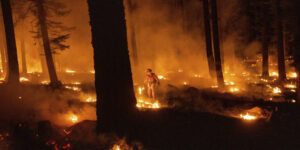
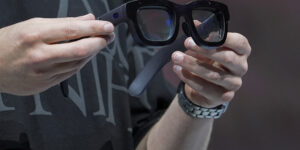




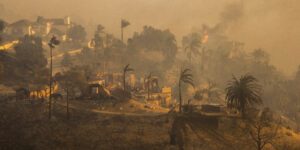










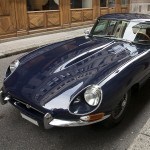 New Specialty Insurer Says Collector Car Owners Are Being Overcharged
New Specialty Insurer Says Collector Car Owners Are Being Overcharged  Swiss Re’s Business Unit CEOs Share Views on Key Risk Themes of 2025
Swiss Re’s Business Unit CEOs Share Views on Key Risk Themes of 2025  Surviving the ‘Silver Tsunami’: Closing the Talent, Skills Gap in Underwriting
Surviving the ‘Silver Tsunami’: Closing the Talent, Skills Gap in Underwriting 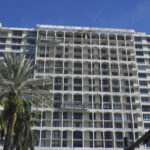 New Regulations Ramping Up Association Costs Frustrate Florida Condo Owners
New Regulations Ramping Up Association Costs Frustrate Florida Condo Owners 




